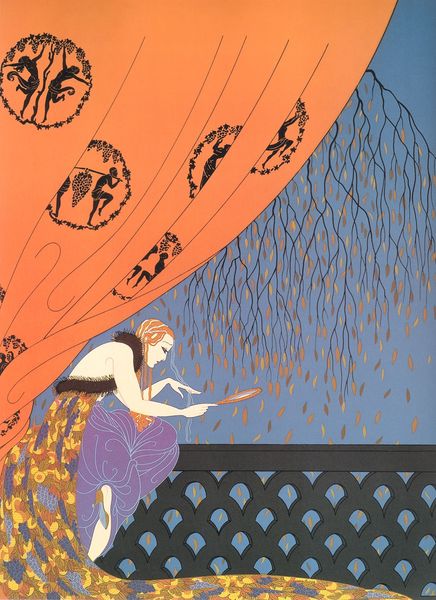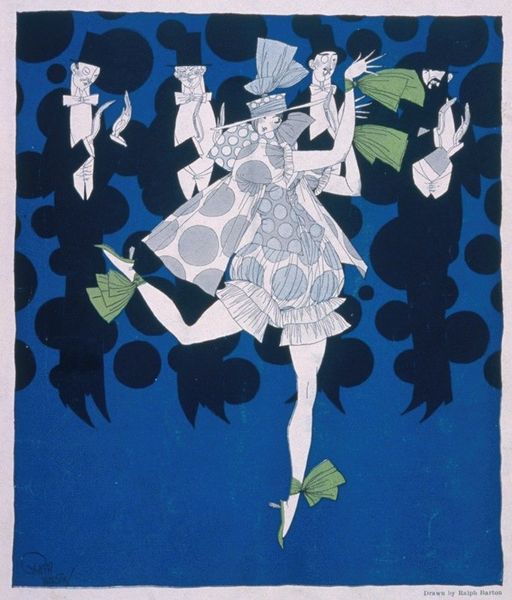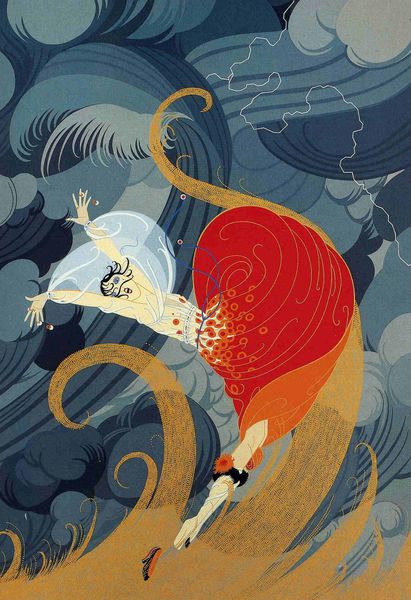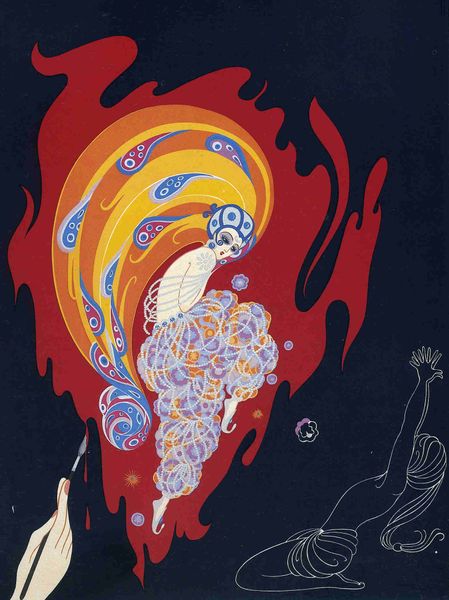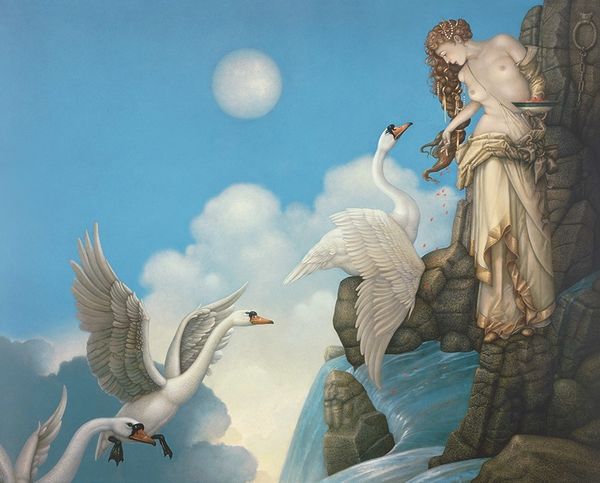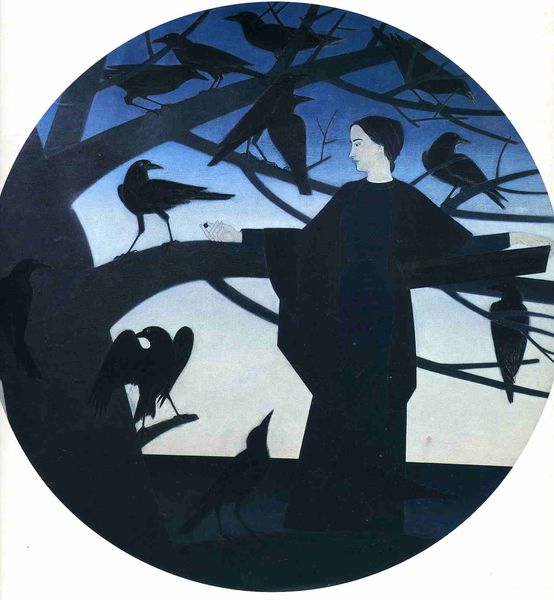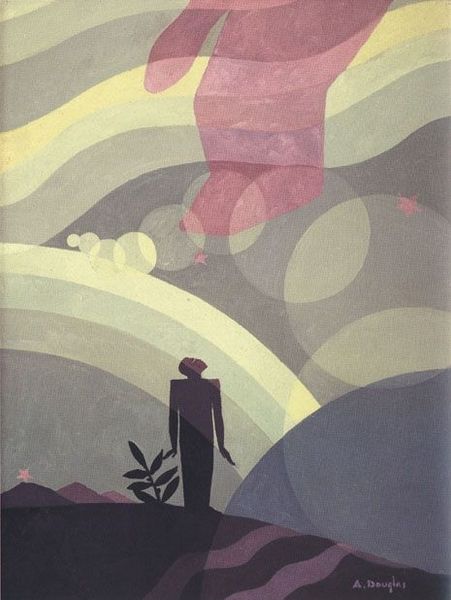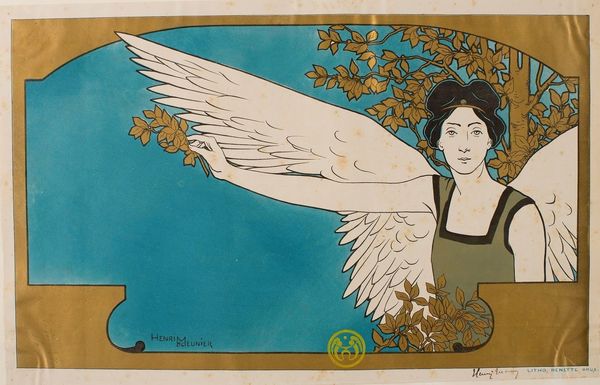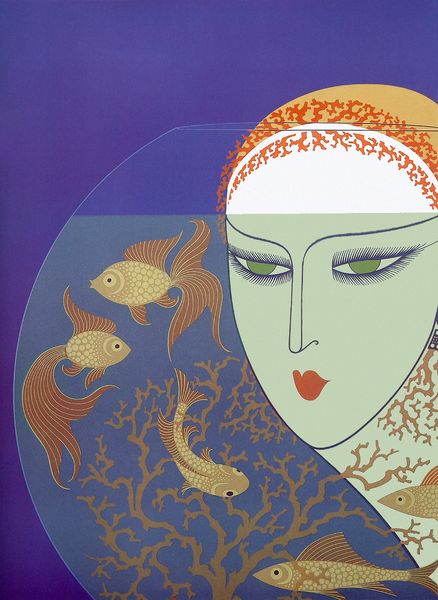
#
tree
#
childish illustration
#
cartoon like
#
cartoon based
#
egg art
#
vector art
#
caricature
#
pop art
#
fluid art
#
sketch
#
naive art
#
water
#
cartoon style
Copyright: Erte,Fair Use
Curator: The overall effect is rather mesmerizing, almost theatrical. Editor: Agreed. Let’s explore Erte’s "Wings of Victory" in more detail. It showcases a stylized female figure releasing birds into a vibrant, sun-drenched sky. Curator: I’m immediately drawn to the garment. Look at how Erte used distinct patterns, perhaps stencils, to build up the folds and volume. The whole image, really, feels incredibly produced; there's an emphasis on controlled ornamentation. Editor: It’s an image that is firmly rooted in its era, both reflecting and shaping perceptions of women during the period. Consider the deliberate stylization; it’s designed for reproduction, perfectly aligned with the burgeoning print culture and Erte's prolific output for magazines like Harper's Bazaar. Curator: The production aspect is key, isn’t it? This isn’t about spontaneous gesture; it's about careful planning, meticulous layering, and potentially, a division of labor if it were to become, say, a textile design. You see these recurring motifs that may very well have been reused and modified from other artworks. Editor: The symbolism too; the figure almost blends into the sky. The birds embody a longing for liberation and flight, reflecting shifting social attitudes in a period that both embraced and resisted progressive notions of gender. How this would have appeared on a page, perhaps with advertisements for makeup, really adds another layer. Curator: The way this image engages with notions of craft versus art feels potent today, and invites considering labor within creative practices. To truly comprehend "Wings of Victory", one must acknowledge not only its design qualities but also how such imagery operated in mass media contexts. Editor: I completely agree. Thinking about who the audience was, how the work would be consumed—that all shapes our interpretation of this artwork as a historical object and also our contemporary appreciation. It asks us what meanings were both intended, and constructed over the past century. Curator: Food for thought about beauty, accessibility, and the hidden labor that creates what seems effortless. Editor: Absolutely. It's art history meeting the study of material culture.
Comments
No comments
Be the first to comment and join the conversation on the ultimate creative platform.
